How to wash a mattress protector – a simple step-by-step guide from professional cleaning experts
Expert advice on how to remove stains and care for your mattress protector

Ellis Cochrane

If you're wondering how to wash a mattress protector, you're in the right place.
I've enlisted the help of various cleaning and bedding experts to bring you a step-by-step guide on how to care for your mattress protector.
After all, even the best mattress protectors need a little TLC every few months to ensure they can keep doing their job, and if you've invested in one of the best mattresses your budget allows, you'll want to keep it in tip-top condition.
So, without further ado, let's get cracking with everything you need to do to get your mattress protector boxfresh once more.
How to wash a mattress topper
'Mattress protectors are very important to prolong the lifespan of your bed and ensure a healthy sleeping environment,' explains house cleaning expert Petya Holevich from Fantastic Services. 'But it’s just as important to know how to wash them correctly.'
Here's everything you'll need to have to hand before you get started.
What you'll need
- Laundry detergent; we like smol’s Liquid Laundry
- Stain remover, like this easylife Mattress Stain Remover from Amazon, or bicarbonate of soda/baking soda
- A sponge or cloth
Step-by-step guide
1. Strip the bed
First things first, strip the bed, removing the duvet, pillows, sheets, and mattress protector. You'll probably want to use this opportunity to wash your sheets, duvet cover, and pillowcases too.
Sign up to our newsletter for style inspiration, real homes, project and garden advice and shopping know-how
2. Check the care label
Next, check the care label on your mattress protector. 'Before you move on to washing your mattress protector, always check and follow the care instructions on the product label,' says cleaning expert Petya.
Note what temperature your protector can be washed at, if it requires a delicate cycle, or whether there's any other advice from the manufacturer on how to care for it. 'This will help you keep your bedding in its best condition and prolong your mattress protector’s lifespan,' advises Petya.
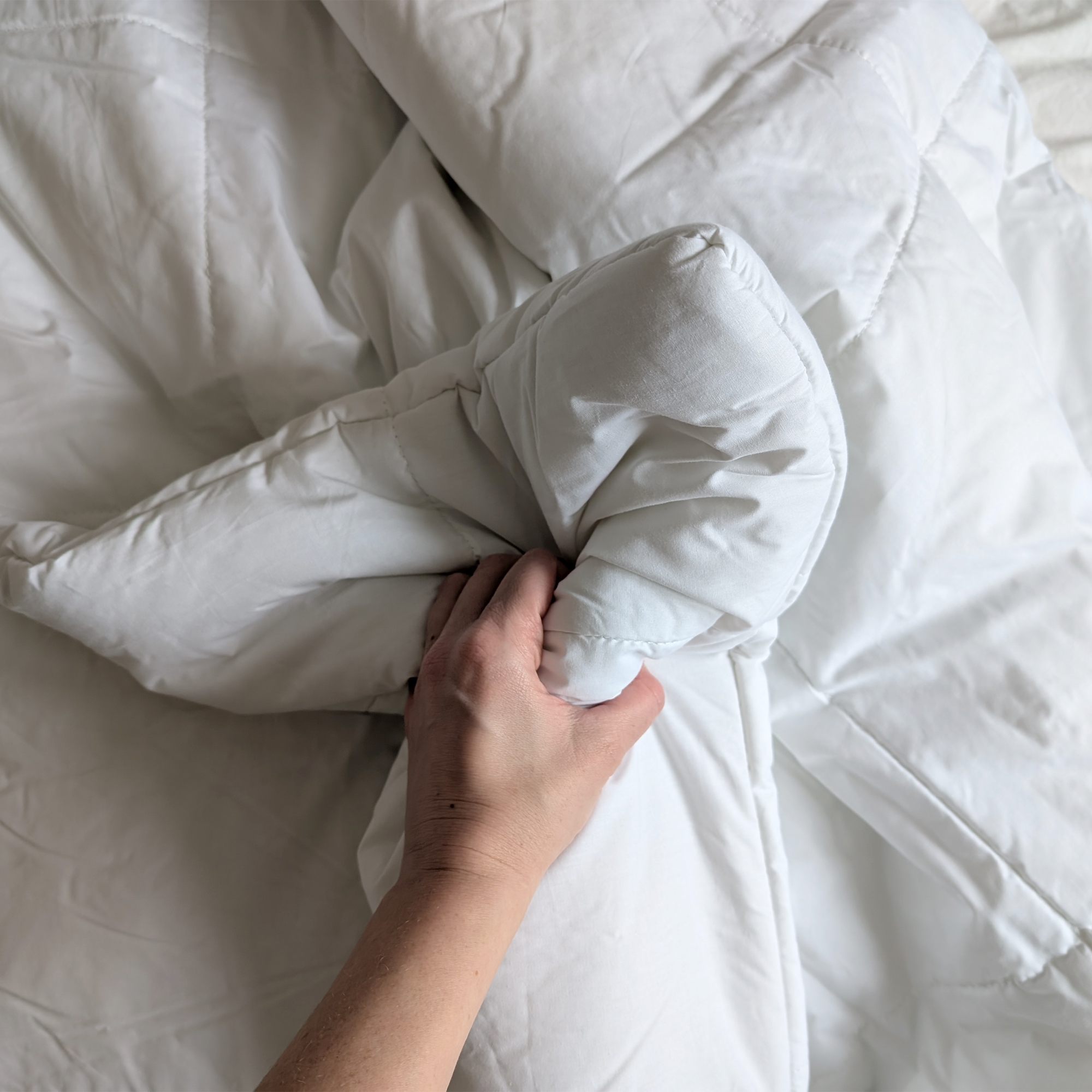
3. Spot-treat any stains
'Sometimes, you may need to spot-clean your mattress protector to avoid staining,' says Petya. 'In such situations, be gentle to avoid damaging the fabric. Use a damp cloth with a bit of mild detergent on it to remove as much of the stain as you can.'
‘Alternatively, you can make a paste with bicarbonate of soda and water (aim for the consistency of porridge) to help lift stains,’ suggests Catherine Green of cleaning product brand smol.
Just don't be tempted to use bleach on your mattress protector as the fabric can be delicate, 'It’s very important to avoid using bleach because it can damage the protector’s fabric,' says Petya.
Dabbing repeatedly at the stain is better than scrubbing, as this can cause damage to the fabric. Or, as Petya suggests, 'instead of scrubbing, just soak the affected area and blot the stain.'
'Repeat these steps until the stain starts to lift up,' says Petya. 'Treat any stains as quickly as possible after they happen so you’ll have the best chance at removing them fully without leaving any marks behind.'
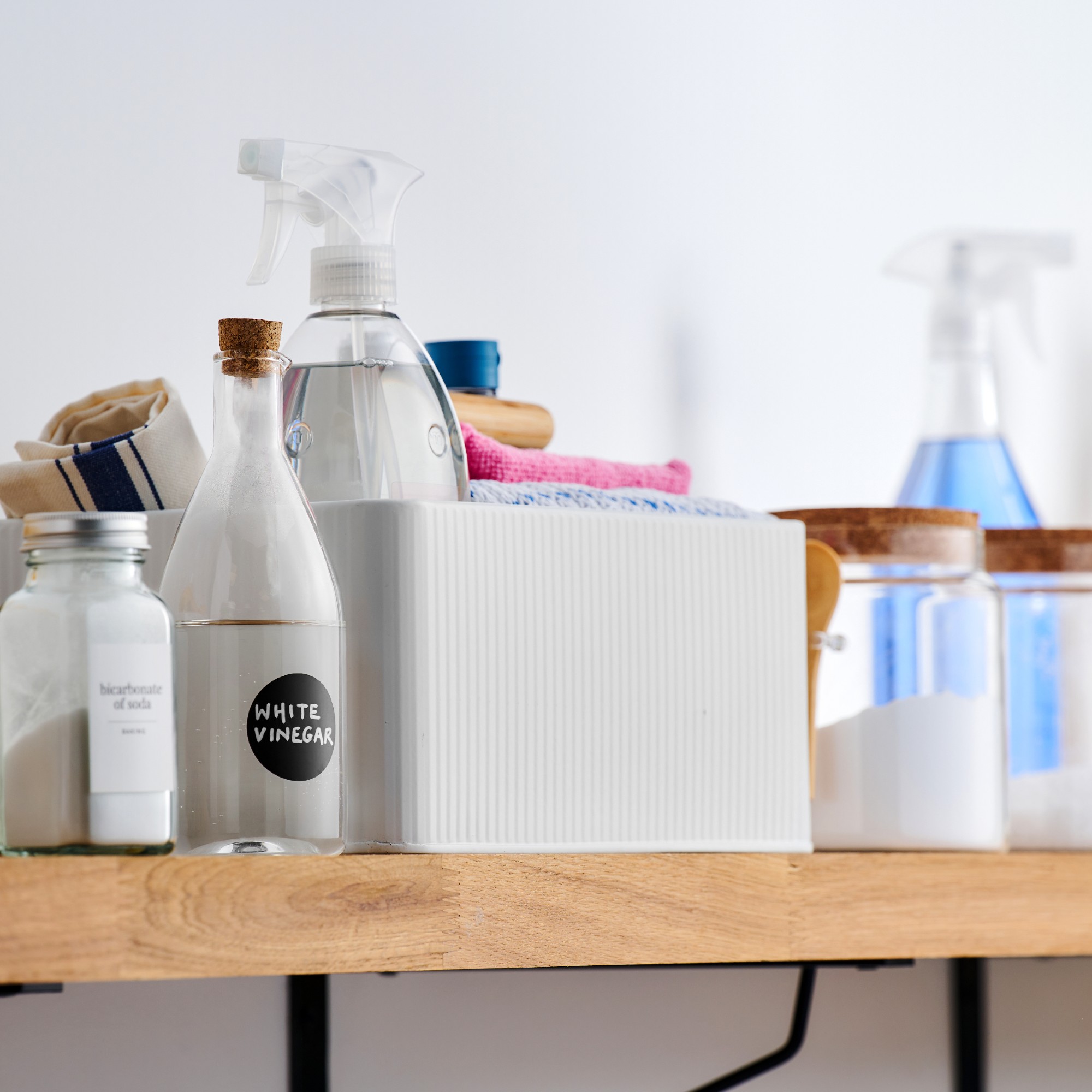
4. Pop it in the washing machine
Next, it's time to get washing. 'If your mattress protector is machine washable, wash it in the washing machine on a warm and gentle cycle, around 40 degrees Celsius,' advises cleaning expert Petya Holevich. 'This will remove oils and germs most effectively without damaging the fabric.'
However, you'll want to make sure you follow the manufacturer's guidance on the care label. Some mattress protectors may require a lower temperature or a gentler cycle.
'A gentle cycle will protect the mattress protector’s fibres,' explains Petya. 'This also means that it’ll spend a longer time in the washing machine, which will ensure that all the dirt, body oils and detergent are rinsed out of the fabric.'
'Additionally, make sure to use gentle detergents that are free from ingredients, such as bleach and optical brightening agents, which can cause damage and discolouration to certain fibres,' Petya continues. 'Usually, when you wash a mattress protector, it’s not necessary to use fabric softener.'
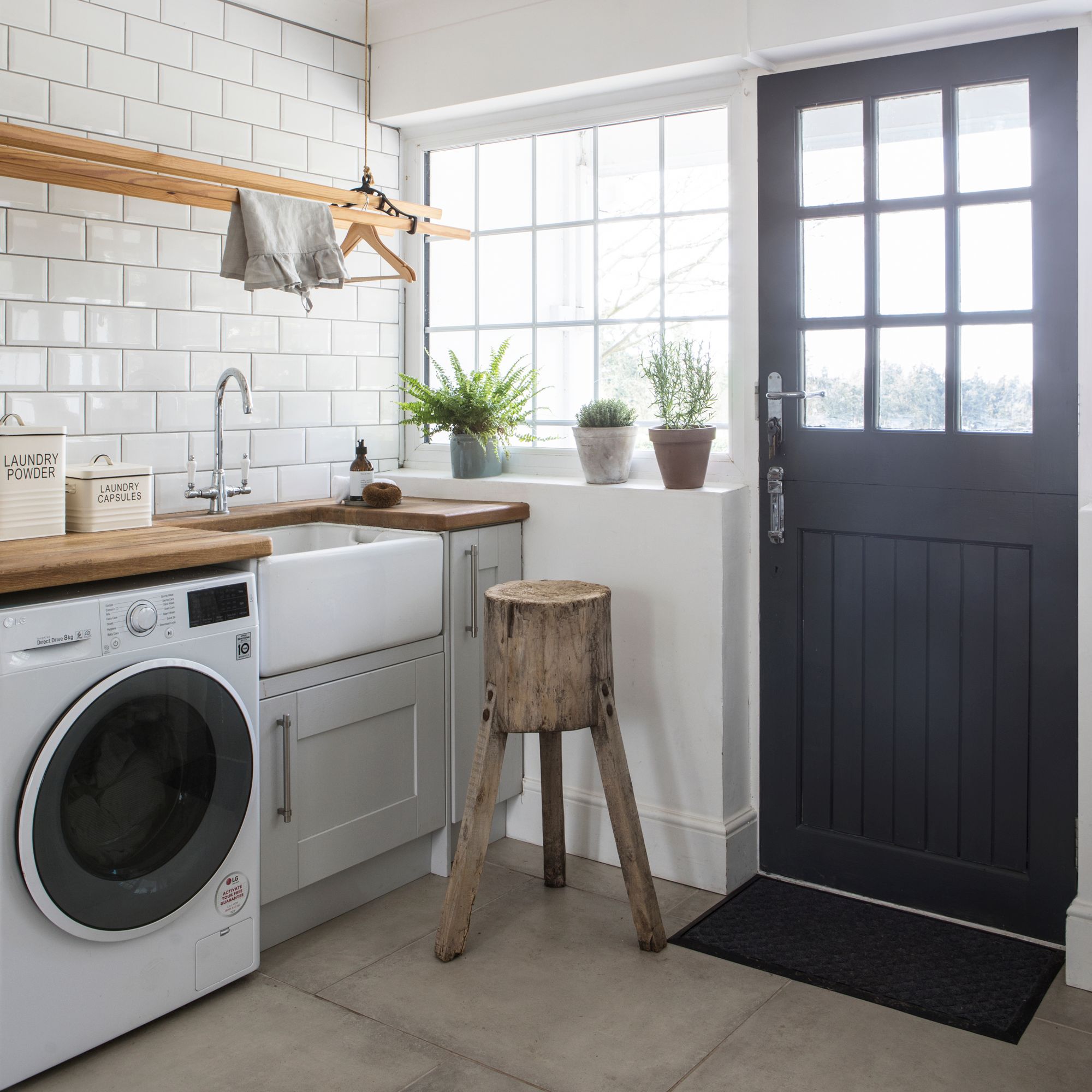
5. Or wash by hand
But what if you don't have a washing machine? Don't worry, there are solutions.
‘If you don't have a washing machine, you can hand wash the protector in a bathtub with a quality detergent and cool water,’ says Catherine from smol. ‘After the protector has been soaked, gently knead it with your hands to work out any stains.'
Once you've given it a good wash, drain the bath of the dirty suds, and make sure to rinse the protector thoroughly in clean water to remove any soap residue. The wring the protector as thoroughly as possible to remove excess water.
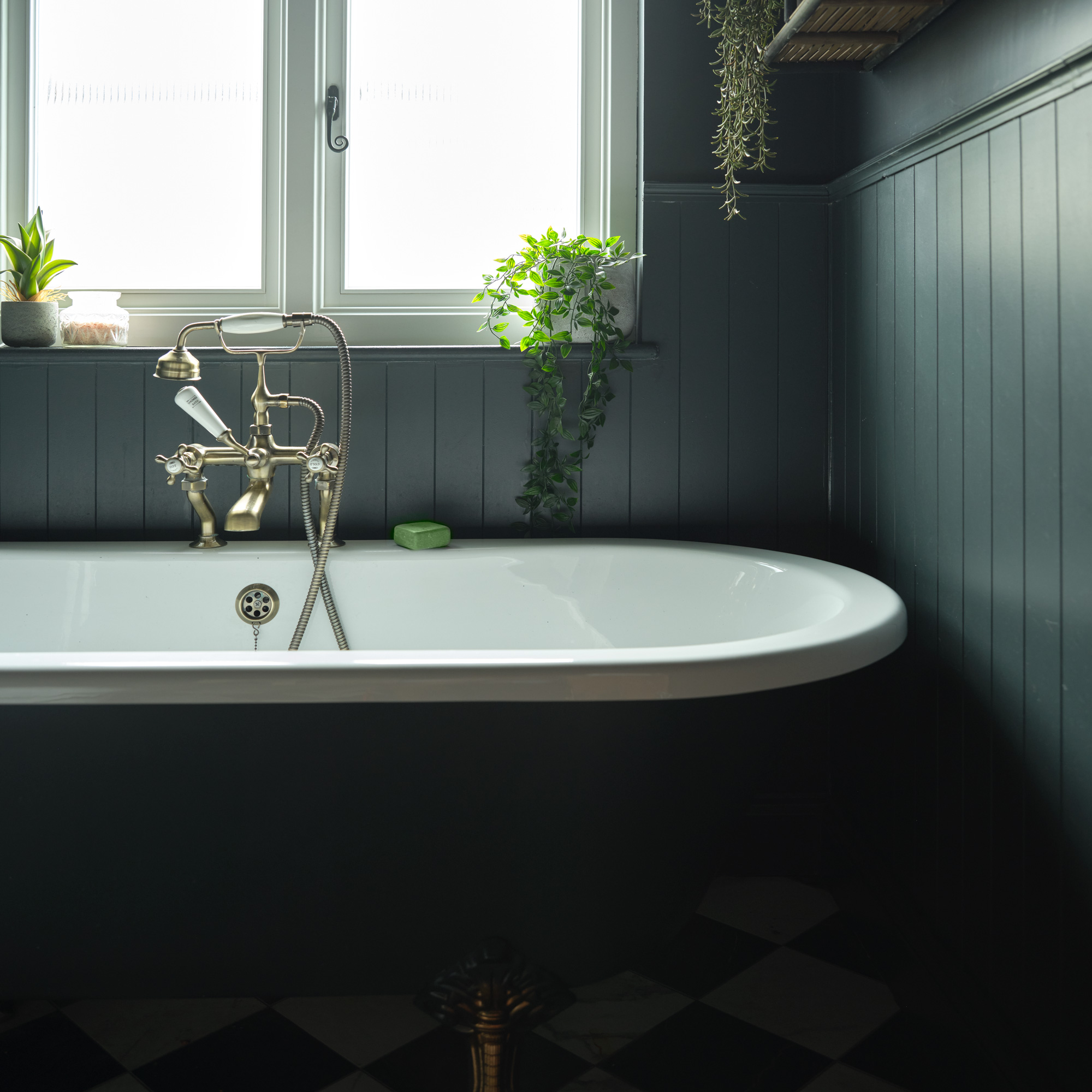
6. Dry thoroughly
'After washing, it’s important to let the mattress protector dry out properly,' says Petya.
Many mattress protectors state they can be tumble-dried, but Olivia Young, cleaning expert and product development scientist at cleaning brand Astonish, advises against this where possible, especially if you have a waterproof mattress protector. 'Avoid the dryer to protect your mattress protector, as high heat can harm its waterproof backing and elastic edges.’
'Ideally, air dry the mattress protector under sunlight,' says Petya. 'The sun acts as a natural antibacterial agent, which will help keep your mattress protector hygienic and fresh.' Catherine from smol agrees, saying ‘the UV rays will help kill any remaining bacteria and fade stubborn stains. Plus, it saves on energy bills.'
However, not all of us have an outside drying space. If you're wondering how to dry bedding indoors, there are solutions. 'If you live in an apartment or don’t have a clothesline, you can use a clothes-drying rack,' says Petya. 'To avoid any bacteria or unpleasant smells from developing, always make sure your mattress protector is completely dry before taking it off the line and using it again.'
Investing in one of the best heated clothes airers, like the Dry:Soon Deluxe 3-Tier Heated Clothes Airer, or one of the best dehumidifiers, like the MeacoDry Arete Two Dehumidifier, can also help to speed up indoor drying times.
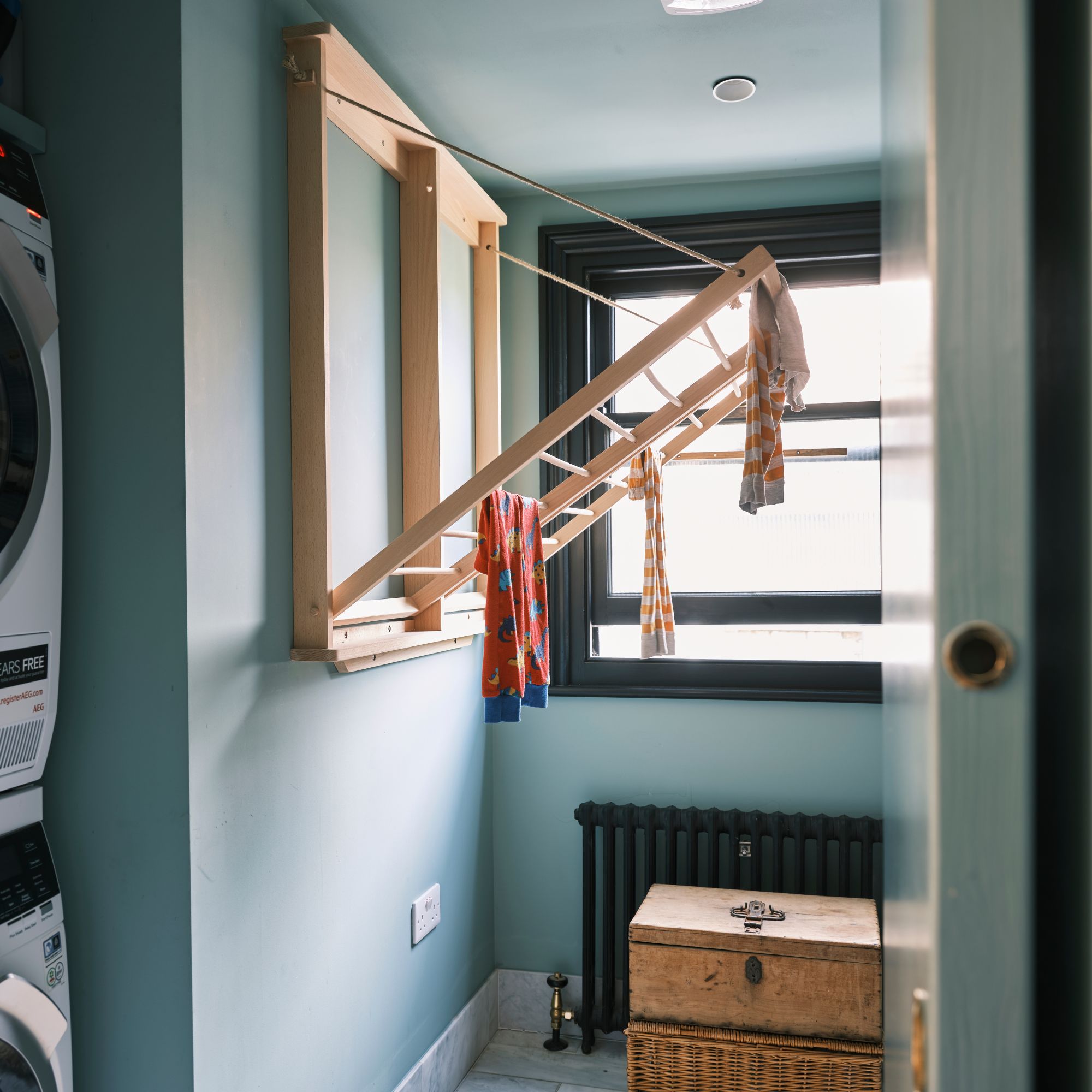
FAQs
How often should a mattress protector be washed?
When it comes to how often you should wash a mattress protector, expert advice is to give it a clean every two months.
'As a general rule of thumb, you should wash your mattress protector every one to two months,' agrees Petya Holevich. 'If you suffer from allergies, you’ll need to wash it more frequently to keep them under control.'
The same applies in the summer months when you may sweat more, or if you've had an illness. Some people prefer to wash their protector at the same time as they wash their bedding (and if you're wondering how often you should wash your bedsheets, that's at least every two weeks).
How do you get yellow stains out of a mattress protector?
Yellow or yellowish stains can appear on your mattress protector for a few different reasons. ‘If it is due to oil from your hair and skin – sebum – a simple fix is shampoo. Apply it to the stain and leave to soak in warm water then give a good scrub before adding to the wash as normal,’ says Catherine from smol.
‘If the yellowing is caused by sweat and saliva, use a water and white vinegar mix in equal parts,' says Catherine. 'Just let your protector soak for around half an hour, before adding to your wash as normal.'
Thanks to our cleaning experts, I'm certainly feeling more ready to tackle washing my mattress protector next laundry day. In fact, it's also inspired me to give my whole sleep set-up a refresh.
If you're feeling the same way our guides on how to wash a duvet, how to wash pillows, and how to clean a mattress can help.
What about you? Which laundry task is next on your to-do list?

Amy is Ideal Home’s Sleep Editor and the Ideal Home Certified Expert on Sleep. She's spent the last four years researching and writing about what makes for the best night’s sleep during the day and testing out sleep products to find the best-in-class by night. So far she’s clocked up over 10,000 hours of pillow, duvet, and mattress testing experience.
Our go-to for all things sleep-related, she’s slept on and under bestselling products from Simba, Emma, Hypnos, Tempur, Silentnight, Panda, and many many more.
As a hot sleeper, Amy is always on the lookout for the most breathable bedding, but she also leads a wider team of testers to ensure our product testing encompasses both hot sleepers, cold sleepers, front sleepers, back sleepers, side sleepers, and everything in-between.
- Ellis CochraneContributor